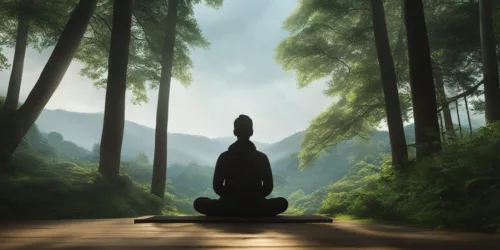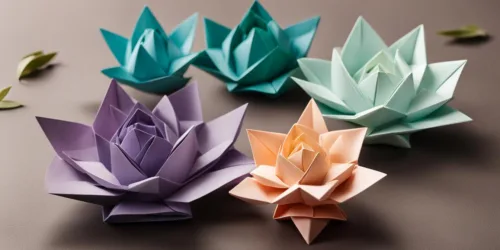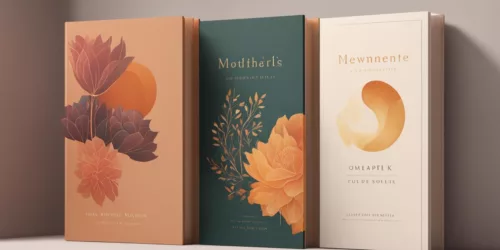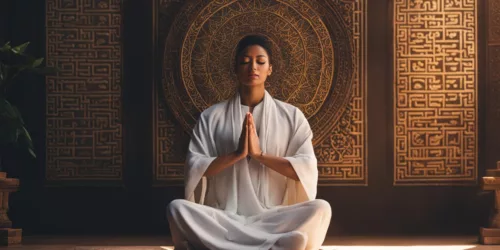Discover the Art of Tea Ceremony with Us
Welcome to our exploration of the captivating world of the Japanese tea ceremony. As we delve into its rich history, mindful rituals, and cultural significance, we invite you to join us on a journey of tranquility and appreciation for the Art of Tea Ceremony.
Originating in the 16th century and refined by the famed tea master Sen no Rikyū, the Japanese tea ceremony, also known as chanoyu, is a harmonious blend of art, tradition, and hospitality. Rikyū’s philosophy of wabi-cha celebrates the beauty found in simplicity and imperfection, emphasizing the importance of mindfulness and connection.
Throughout this series, we will explore the tea ceremony’s rituals and traditions, uncover the significance of its tools and utensils, and delve into the tea ceremony’s cultural heritage. Join us as we uncover the secrets and beauty of this ancient practice.
Key Takeaways:
- The Japanese tea ceremony, or chanoyu, originated in the 16th century and was elevated to an art form by tea master Sen no Rikyū.
- Rikyū’s wabi-cha philosophy celebrates simplicity and imperfection as the source of true beauty in the tea ceremony.
- The tea ceremony is a meditative practice that emphasizes mindfulness, tranquility, and the interaction between the host and guests.
- Specific tools and utensils, such as ceremonial-grade matcha and a matcha whisk, are used to prepare and serve the tea.
- The tea ceremony has deep cultural significance in Japan, providing a platform for social connections and fostering appreciation for ceramics and the wabi aesthetic.
The Rituals of the Tea Ceremony
The tea ceremony is a deeply ritualistic practice that fosters a meditative and serene atmosphere. Each step of the ceremony is carefully executed to create an experience of mindfulness and tranquility. Let’s explore the intricate rituals that make up this ancient tradition.
Setting the Intention
Before the tea ceremony begins, it is important to set an intention. This helps create a focused and mindful mindset throughout the ceremony. Participants take a moment to center themselves and express gratitude for the tea and the opportunity to partake in this special experience.
Preparing the Space
The tea ceremony is typically conducted in a designated tea room, known as a “chashitsu,” which is designed to evoke a sense of tranquility and simplicity. The space is meticulously arranged, with minimal decorations and natural elements such as bamboo or floral arrangements. The room is tidied and free from distractions, ensuring a peaceful environment for the ceremony to unfold.
Cleansing the Utensils
Prior to the ceremony, the utensils used in the tea preparation are washed and cleaned meticulously. A soft cloth is used to wipe away any dust or impurities, symbolizing the purification of both the utensils and the mind. This act of cleansing emphasizes the importance of cleanliness and respect for the tea ceremony.
Warming the Tea Bowl
The tea bowl, also known as a “chawan,” plays a significant role in the tea ceremony. It is traditionally made of ceramics and is carefully selected for its shape, texture, and aesthetic qualities. To ensure the tea stays warm, the tea bowl is warmed by pouring hot water into it. This step also serves to awaken the senses and prepare the participants for the tea ritual.
Preparing the Matcha
Matcha, a finely ground powdered green tea, is the star of the tea ceremony. To prepare the matcha, a tea scoop, known as a “chashaku,” is used to measure the proper amount of matcha powder. The matcha is then placed in the tea bowl, and hot water is added. Using a bamboo matcha whisk, known as a “chasen,” the tea and water are skillfully whisked together with gentle and precise movements to create a frothy and vibrant beverage.
Savoring the Tea and Sweets
The tea, both thick matcha known as “koicha” and thin matcha known as “usucha,” is presented to the guests, who savor it mindfully. Alongside the tea, traditional Japanese confections called “wagashi” are served, offering a complementary balance of flavors and textures. These sweets are specifically designed to harmonize with the bitterness and richness of the matcha, providing a delightful and balanced experience.
The Significance of the Tea Ceremony
The tea ceremony holds great cultural significance in Japan. It originated as an elite artistic pursuit and provided a platform for social connections among the ruling class, the warrior elite, and wealthy merchants.
The tea room, usually designed to accommodate a small number of participants, is a symbolic space where guests temporarily withdraw from the mundane world. It is a place of tranquility and contemplation, carefully designed to enhance the tea ceremony experience. The tea room often incorporates elements of traditional Japanese architecture, such as sliding doors and tatami mats, creating an ambiance that reflects the spirit of the ceremony.
The interaction between the host, guests, and tea utensils is of utmost importance, and each tea gathering is a unique experience. The tea utensils, including tea bowls, water jars, and tea caddies, are valued not only for their practicality but also for their aesthetic qualities. These utensils are meticulously selected based on their craftsmanship, materials, and historical significance.
The ceramics used in the tea ceremony are especially revered. They range from ancient Chinese treasures to rustic Korean and Japanese vessels. The connoisseurship of ceramics is an integral part of the tea ceremony culture, with collectors and enthusiasts appreciating the nuances of different styles and kilns.
The concept of wabi, which celebrates simplicity and imperfection, is highly regarded in the tea ceremony. It influenced the appreciation of unglazed stoneware from kilns such as Shigaraki and Bizen, which are known for their earthy qualities and subdued aesthetics. Additionally, new types of ceramics, such as Raku, Shino, and Oribe, were developed specifically for the tea ceremony, showcasing unique glazes and decorative motifs.
Through its rich history, the tea ceremony has evolved and become an integral part of Japanese culture. It is not just a mere act of preparing and consuming tea, but a profound and spiritual practice that embodies harmony, respect, and mindfulness. The tea ceremony continues to captivate tea enthusiasts and art lovers around the world, inviting them to immerse themselves in the beauty and tranquility of this ancient tradition.
Conclusion
The Art of Tea Ceremony is a deeply significant practice that holds great cultural value in Japan. Through its various rituals, traditions, and etiquette, the tea ceremony creates a serene atmosphere that fosters mindfulness and appreciation for simplicity and imperfection. It is not just about enjoying a cup of tea, but about embracing the entire experience and the unique connection it creates between the host and guests.
During the tea ceremony, specific tools such as ceremonial-grade matcha, a matcha whisk, kettle, and tea bowl are used with precision and care. These tools, along with the tea room and the ceramics utilized in the ceremony, contribute to the creation of a symbolic and meaningful space. The tea ceremony etiquette guides the interactions and behaviors of both the host and guests, emphasizing respect, gratitude, and tranquility.
The Art of Tea Ceremony has a rich history that dates back to the 16th century. Over the years, it has evolved into an art form that continues to be cherished and practiced today. Its significance extends beyond the mere act of preparing and consuming tea. The tea ceremony is a captivating cultural tradition that embodies the essence of Japanese culture, celebrating beauty in simplicity, and providing a space for reflection, connection, and appreciation.
FAQ
What is the history of the tea ceremony?
The Japanese tea ceremony, also known as chanoyu, has ancient origins and dates back to the 16th century. It was elevated to an art form by Sen no Rikyū, the renowned tea master.
What are the rituals involved in the tea ceremony?
The tea ceremony includes various rituals and traditions, such as tidying the room, cleaning the utensils, warming the tea bowl, whisking the matcha, and enjoying traditional Japanese confections alongside the tea.
What is the significance of the tea ceremony?
The tea ceremony holds great cultural significance in Japan. It originated as an elite artistic pursuit and provided a platform for social connections among the ruling class, the warrior elite, and wealthy merchants.
What are the tea utensils used in the ceremony?
The tea ceremony involves the use of specific tools such as ceremonial-grade matcha, a matcha whisk, kettle, tea bowl, and more. The tea utensils, including tea bowls, water jars, and tea caddies, are valued for both their practicality and aesthetic qualities.
What is the role of the tea room in the ceremony?
The tea room, usually designed to accommodate a small number of participants, is a symbolic space where guests temporarily withdraw from the mundane world and engage in the tea ceremony. The interaction between the host, guests, and tea utensils is of utmost importance.






